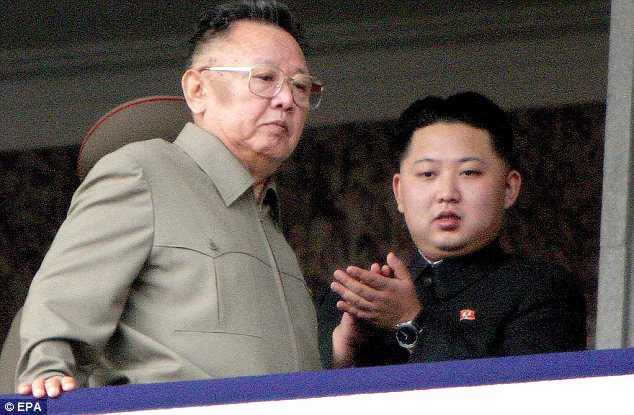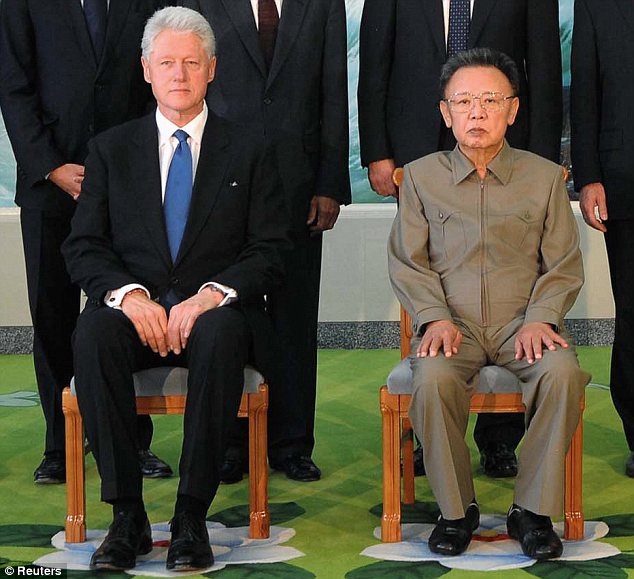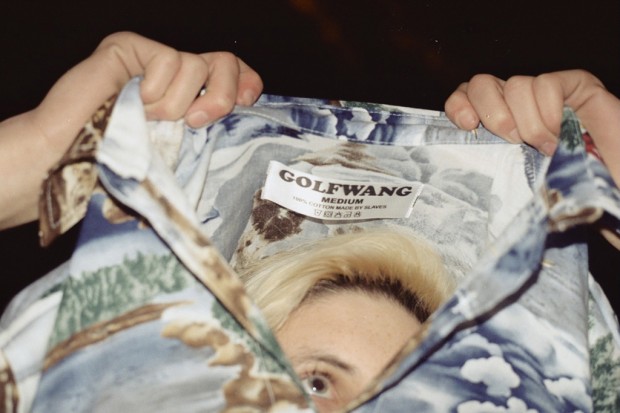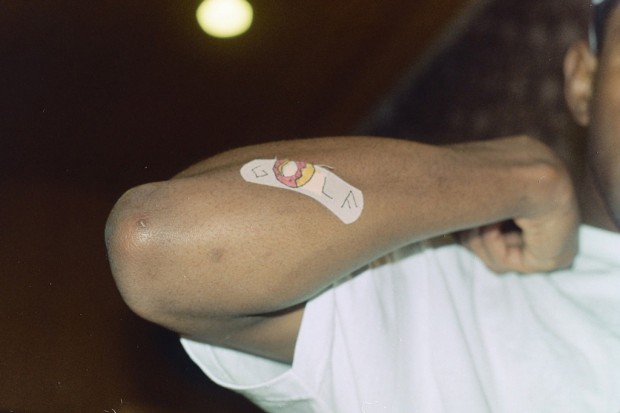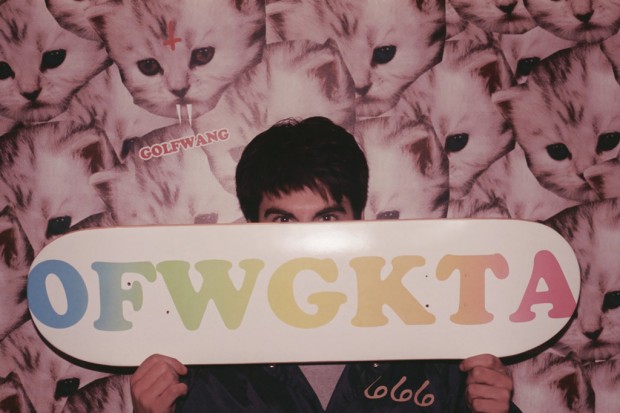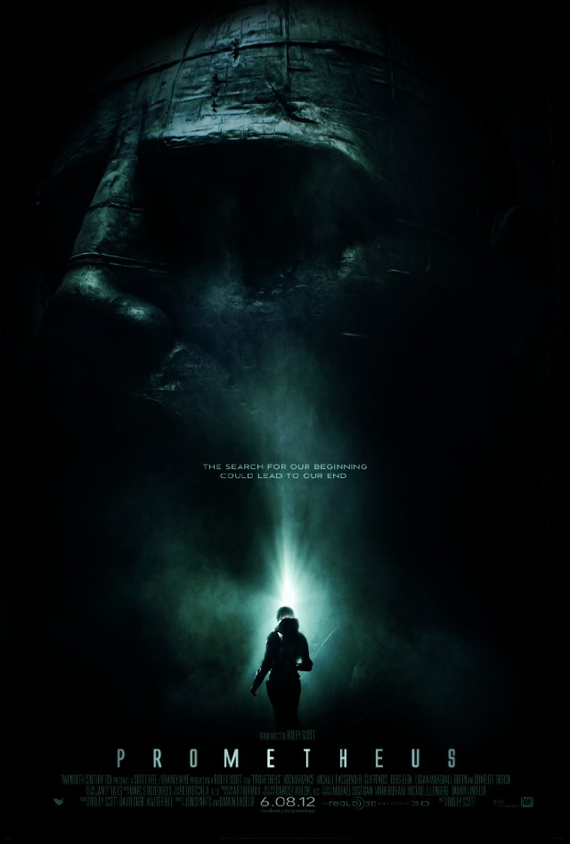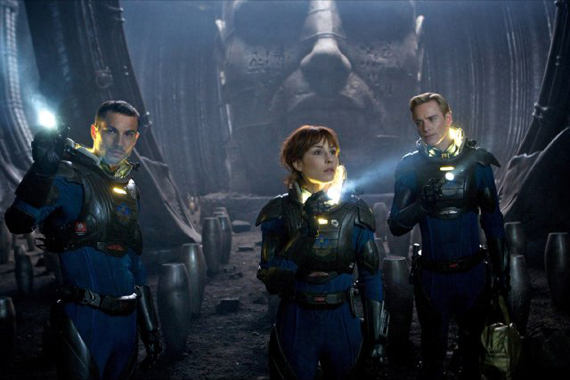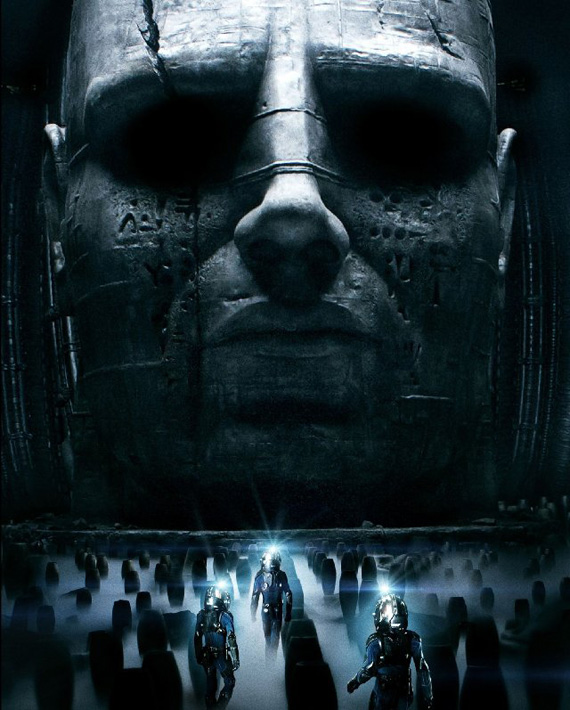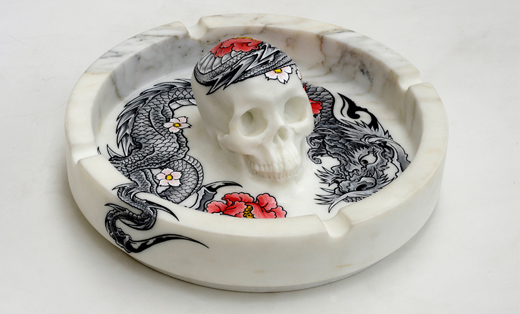Author Archives: Luke Norris
North Korea’s Kim Jong Il Dies
Bloomberg Article by Bill Austin –
Kim Jong Il, the second-generation North Korean dictator who defied global condemnation to build nuclear weapons while his people starved, has died, state media reported. A government statement called on North Koreans to “loyally follow” his son, Kim Jong Un.
Kim, 70, died on Dec. 17 of a heart attack brought on by mental and physical strain while on a domestic train trip, the official Korean Central News Agency said. Kim probably had a stroke in August 2008 and may have also contracted pancreatic cancer, according to South Korean news reports.
The son of Kim Il Sung, North Korea’s founder, Kim was a chain-smoking recluse who ruled for 17 years after coming to power in July 1994 and resisted opening up to the outside world in order to protect his regime. The likely succession of his little-known third son, Jong Un, threatens to trigger a dangerous period for the Korean peninsula, where 1.7 million troops from the two Koreas and the U.S. square off every day.
“Kim Jong Un’s taking complete control of the helm will not take place for a while due to his youth and inexperienced leadership,” said Yang Moo Jin, a professor at the University of North Korean Studies in Seoul. “The North will likely be under the control of a governing body for about a year.”
A state television announcer wept as she read the news of Kim’s death. Footage was aired of thousands of people in the main square of the capital of Pyongyang chanting in unison and waving Kimjongilia, a flower named after the deceased leader.
Jong Un, is at the “forefront of the revolution,” KCNA said in its statement of the elder Kim’s death. While official reports give Kim’s age as 69, Russian records indicate he was born in Siberia in February 1941.
Won, Stocks Fall
South Korea’s won declined as much as 1.6 percent to a two-month low of 1,177.15 per dollar and government bonds dropped after the news. The Kospi index lost 4.2 percent to 1,762.34 as of 12:38 p.m. in Seoul.
Kim leaves behind an economy less than three percent the size ofSouth Korea’s and which has relied on economic handouts since the 1990’s, when an estimated 2 million people died from famine. The United Nations and the U.S. last year increased economic sanctions imposed as a result of North Korea’s nuclear weapons activities and attacks that killed 50 South Koreans.
Lampooned by foreign cartoonists and filmmakers for his weight, his zippered jumpsuits, his aviator sunglasses and his bouffant hairdo, Kim cut a more serious figure in his rare dealings with world leaders outside the Communist bloc.
“If there’s no confrontation, there’s no significance to weapons,” he told Madeleine Albright, then U.S. secretary of state, in a 2000 meeting in Pyongyang.
Nuclear Tests
Those words took on greater significance in 2009 as Kim defied threats of United Nations sanctions to test a second nuclear device and a ballistic missile, technically capable of striking Tokyo.
The following year North Korea lashed out militarily, prompting stern warnings from the U.S. and South Korea. An international investigation blamed Kim’s regime for the March 2010 sinking of a South Korean naval vessel that killed 46 sailors. Eight months later North Korea shelled a South Korean island, killing two soldiers and two civilians. The act followed reports by an American scientist that the country had made “stunning” advances to its uranium-enrichmentprogram.
Japan Security Meeting
Japanese Prime Minister Yoshihiko Noda’s cabinet held a security meeting after the announcement, while the U.S. issued a statement saying the Obama administration is “closely monitoring” the situation and is contact with South Korea and Japan.
Last year, Kim also set in line his succession plan. Kim Jong Un, thought to be 28 or 29, was first mentioned in official KCNA dispatches on Sept. 28, 2010, when his appointments as general and vice chairman of the Central Military Commission of the party were announced. Jong Un stood at his father’s right side at a military parade the next month, wearing a black suit with a mandarin collar similar to the style worn by his grandfather, who founded the nation after World War II.
His nuclear pursuit was an attempt to counter the advantage in conventional weapons that South Korea was able to build as its economy boomed. When North Korea tested its first nuclear bomb, on Oct. 9, 2006, Kim enhanced his bargaining position with the South and two other old enemies, the U.S. and Japan.
Cult Personality
Kim was groomed to succeed his father for three decades, taking power when the “Great Leader” died in July 1994 to an outpouring of national grief. He extended a cult of personality as the “Dear Leader” even as many of the nation’s 24 million citizens lived on an average income of less than a dollar a day.
In the official version of Kim’s birth, a double rainbow heralded his arrival on Mount Paektu, revered as the birthplace of the Korean people, at a secret guerrilla camp where his father was leading the struggle against Japanese colonial rule during World War II.
Foreign historians say instead that by then the elder Kim was in theeastern Soviet Union where he trained at a Soviet army base, having already retreated from northeastern China, the scene of most of his guerrilla activity. Soviet records show that the year of Kim’s Feb. 16 birth was altered in the official version, to 1942 from 1941. That permitted his milestone birthdays to be celebrated in the same years when the country feted those of his father, who was born in 1912.
Troubled Life
Kim Il Sung and his family returned in 1945 to Pyongyang, which became the capital of North Korea after the government was established in 1948. After the elder Kim took power, his son experienced a troubled family life. A younger brother drowned, and his mother died. His father remarried and the boy clashed with his stepmother and half-brothers.
Official accounts say non-family members including teachers deferred to the son as a little prince. By the time he graduated from Kim Il Sung University in Pyongyang in 1964, he had developed a reputation among the small foreign community as undisciplined and impulsive, a hard-partying womanizer and lover of gourmet food and fast cars.
For three decades, Kim exercised power as a high-level official, rarely traveling abroad or meeting foreign leaders and often going for long periods when his domestic public appearances weren’t mentioned in the state-run media. He was named the heir-designate in 1974 and made co-ruler in 1984.
Movie Buff
Kim was a cinema buff whose personal library included tens of thousands of western movies. Obsessed with improving the country’s film output, he had agents kidnap South Korea’s leading director, Shin Sang-ok, and the director’s actress wife, Choi Eun-hi. They were brought to Pyongyang to work in the local industry and subsequently escaped with tape recordings of conversations they had with Kim.
For more than a decade, Kim also employed a Japanese sushi chef, whose 2003 memoir, “Kim Jong Il’s Chef,” chronicled lavish dinner parties featuring global delicacies.
As deputy and later leader of the party’s propaganda department, Kim led North Korea’s version of China’s Cultural Revolution, remodeling the country’s cinema, opera and other arts to intensify thepersonality cult that deified his father and later himself.
“People of the world, if you are looking for miracles, come to Korea,” the party newspaper said in a pre-Christmas editorial celebrating the junior Kim’s 1980 elevation to the politburo’s inner circle. “Christians, do not go to Jerusalem. Come rather to Korea. Do not believe in God. Believe in the great man.”
That way of looking at the supreme leader “was the work of Kim Jong Il” rather than his father, wrote Hwang Jang Yop, a former propaganda chief who defected to South Korea in 1997. Kim’s economic legacy is a country on the brink of ruin.
North Korean Economy
Until the early 1970s, North Korea’s command economy performed impressively compared with the capitalist system adopted by rival South Korea.
Those roles reversed early in Kim’s tenure as South Korea’s economy took off, though he largely ignored economic realities and lavished funds on grandiose monuments promoting worship of his parents and himself. Most prominent is a 105-story pyramid- shaped hotel buildingdominating the Pyongyang skyline. Started in 1987, the hotel remained under construction and unopened more than two decades later.
Kim remained hesitant to open the country to market forces. During a visit to China in 1983, Chinese leader Hu Yaobang advised him to promote tourism. Kim worried that tourists would be able to identify North Korea’s defenses.
“If Pyongyang is opened up, it will be the same as calling back the forces along the border,” he told the kidnapped director and actress in a 1983 discussion that they secretly taped and later carried out during their escape in 1986. “It’s the same as being disarmed.”
Deadly Walk
Tourists were permitted in the late 1990s, most notably to Mount Geumgang, known for its scenic beauty. In 2008, North Korean troops shot and killed a South Korean tourist there who they said entered a military zone while taking a walk. The resort is now closed to South Koreans.
By the time Kim took power in 1994, Russia and the countries of Eastern Europe had cast off communism and were no longer sending aid. That left China as the main benefactor, accounting for 83 percent of North Korea’s $4.2 billion of international commerce in 2010, according to the Seoul-based Korea Trade & Investment Promotion Agency.
1990s Famine
Hundreds of thousands of North Koreans died in a famine in the mid- and late-1990s. Kim refrained from enforcing the usual tight restrictions on mobility, permitting starving people to travel within the country to find food. Kim hoped to avert a sudden loss of popular support, so that the regime would not “experience meltdown as in Poland and Czechoslovakia,” he said in a 1996 speech that was recorded and later smuggled abroad.
Kim’s closest flirtation with economic overhaul began with a series of legal changes starting in 1998. A new constitution adopted that year called for “a cost-accounting system” for economic management and joint ventures with foreigners in special economic zones.
This led to the opening of Gaeseong Industrial Complex where more than 100 South Korean companies set up shop, hiring North Korean workers. South Korea’s economy is 40 times larger than North Korea’s.
Nuclear Brinksmanship
Kim stepped up his nuclear brinksmanship with the outside world in 2003, when he withdrew from the Nuclear Non- Proliferation Treaty, triggering a flurry of diplomatic activity that spawned the six-party talks involving the U.S., Japan, Russia, South Korea and China. Negotiations intensified after the 2006 nuclear detonation, with North Korea agreeing to shut its nuclear reactor in exchange for shipments of fuel.
Tensions flared again in April 2009 after the UN denounced a ballistic missile test and North Korea said it would withdraw permanently from six-party negotiations and resume uranium enrichment. The regime also fired 17 short-range missiles between May and July.
Kim’s regime tested a second nuclear device in May as well, precipitating additional UN sanctions. The Security Council on July 17 barred five North Korean officials from leaving their country and ordered their foreign assets frozen as punishment for working on nuclear weapons and missiles.
Public Appearances
Kim made two major public appearances in 2009, once in April and another on July 8 to commemorate the 15th anniversary of his father’s death. In footage of the latter event on Korean Central Television, Kim limped and his hair and features seemed thinner than three months earlier.
He bounced back a month later, leveraging the detention of U.S. journalists Euna Lee and Laura Ling to win a visit by former U.S. President Bill Clinton. Clinton flew to Pyongyang on what the U.S. administration insisted was a private humanitarian mission to secure the reporters’ freedom.
Kim was photographed smiling alongside a stony-faced Clinton, who left with the women following a one-hour meeting and dinner with the Korean leader, according to Korean Central News Agency.
“Kim Jong Il inherited a genius for playing the weak hand and by keeping the major powers nervous, continuing his father’s tradition of turning Korea’s history of subservience on its head,” said Michael Breen, the Seoul-based author of “Kim Jong Il: North Korea’s Dear Leader,” a biography. “We have entered an uncertain moment with North Korea.”
Photos from Daily Mail
PicNYC Table
Made by Haiko Cornelissen Archtecten, this PicNYC table is designed for the urban green thumb.
GOLF WANG Lookbook
While Odd Future’s creativity and strong ideas in the music world catapulted the talented collective to fame in 2011, Tyler, the Creator and other members have long expressed interest in other forms of design. On this note, Odd Future recently christened their Golf Wang Pop-Up store on Fairfax Avenue in Los Angeles, which is open through early January. Now, the group has released a full collection lookbook for their brand GOLF WANG, titled “Holiday 1991,” which features an array of graphic items, accessories, skateboard decks. Most of the collection was designed by Tyler himself, the highlights of which include a set of all over print shirts, ‘OFWGKTA’ skateboard decks, and an embroidered ‘Golf Wang’ Hat. For the time being, most of the items in the lookbook are only available at the Fairfax brick-and-mortar shop, however Tyler hinted on his twitter he may be open to the idea of placing some items on Odd Future’s online shop in the future.
Source
RZA Speaks on Kanye West’s Work Ethic
[RBMA] RZA: de trabajar con Kanye West from Extended Play on Vimeo.
The Wu-Tang leader takes a seat on the couch at the Red Bull Music Academy and discusses the extensive work regimen Kanye and his team went through, while working on West’s album My Beautiful Dark Twisted Fantasy. RZA goes on to compare the differences between ‘Ye and his crew, to the work ethic experienced throughout the Wu-Tang Clan.
Realistic Samurai Pizza Cats
One of my favourite cartoons growing up as a kid. The illustrations are by Rogier van de Beek.
Conference of Cool.
Jamie Byng in conversation with Gil Scott-Heron
Jamie Byng, publisher of Canongate Books, was a friend of Gil Scott-Heron for more than 20 years. During 2010 they recorded this interview in London where the rapper-poet talked about his life and work, interspersed with intimate performances of his music.
CAMILLA HANSEN & YASMIN BRUNET BY ARAM BEDROSSIAN FOR LOVECAT MAGAZINE





 Camilla Hansen & Yasmin Brunet photographed by Aram Bedrossian in « Body Double » for Lovecat Magazine #3.
Camilla Hansen & Yasmin Brunet photographed by Aram Bedrossian in « Body Double » for Lovecat Magazine #3.
Prometheus: New Movie Poster
In Greek mythology, the Titan god Prometheus gave raise to mankind, first by forging out of clay. Then, he stole fire from Zeus so man can have warmth and light. Fittingly, an advanced space craft with the same name arrived at the galaxy’s fringe, in search of humankind’s origin. What Prometheus and its crew found, however, was an origin but an end to all… Many have called it the prequel to director Ridley Scott‘s sci-fi thriller Alien, though details on the new film are not readily available. What is known is that the ferocious creature will somehow be incorporated into the new plot. With Noomi Rapace, the actress in the original live action film of The Girl with the Dragon Tattoo, Guy Pearce, Patrick Wilson, Charlize Theron, and more, Prometheus is set to debut June of 2012.
Apple Bay House: New Zealand
Far off the beaten path, amongst the untouched nature of New Zealand, the Apple Bay House rises amongst the green-colored hills. This stunning house by Parsonson Architects is only accessible by off-road vehicle or boat.
adidas Originals: Star Wars™ Cantina 2010
Still one of my favourite ads.
adidas Originals invites you to join David Beckham, Daft Punk, Snoop Dogg, Franz Beckenbauer, Noel Gallagher, Ian Brown, Ciara, Jay Baruchel, DJ Neil Armstrong and some of your dear, old friends for an intergalactic 2010 FIFA World Cup™.
DC Comics + Converse Chuck Taylor All Star Hi ‘The Riddler’
Salt Boarding – Blank Snowboards
The crew at Blank Snowboards ventured to the Bonneville Salt Flats in Utah for some action sports moments. Being towed at nearly 50 m.p.h.
Blackberry Bold 9900 ‘White’
 RIM will be releasing a white version of the Blackberry Bold 9900. While the phone comes in a white casing, it will similarly run on the Blackberry 7 operating system.
RIM will be releasing a white version of the Blackberry Bold 9900. While the phone comes in a white casing, it will similarly run on the Blackberry 7 operating system.
Source
Tattoo sculptures by Philippe Pasqua
Steve Jobs: Billion Dollar Hippy (BBC Documentary)
Steve Jobs Biography:
Broadly considered a brand that inspires fervour and defines cool consumerism, Apple has become one of the biggest corporations in the world, fuelled by game-changing products that tap into modern desires. Its leader, Steve Jobs, was a long-haired college dropout with infinite ambition, and an inspirational perfectionist with a bully’s temper. A man of contradictions, he fused a Californian counterculture attitude and a mastery of the art of hype with explosive advances in computer technology.
Insiders including Apple co-founder Steve Wozniak, the chairman who ousted Jobs from the company he founded, and Jobs’ chief of software, tell extraordinary stories of the rise, fall and rise again of Apple with Steve Jobs at its helm.
With Stephen Fry, world wide web inventor Sir Tim Berners-Lee and branding guru Rita Clifton, Evan Davis decodes the formula that took Apple from suburban garage to global supremacy.
Bio:
Steven Paul Jobs (February 24, 1955 — October 5, 2011) was an American businessman and inventor widely recognized as a charismatic pioneer of the personal computer revolution. He was co-founder, chairman, and chief executive officer of Apple Inc. Jobs was co-founder and previously served as chief executive of Pixar Animation Studios; he became a member of the board of directors of The Walt Disney Company in 2006, following the acquisition of Pixar by Disney.
In the late 1970s, Apple co-founder Steve Wozniak engineered one of the first commercially successful lines of personal computers, the Apple II series. Jobs directed its aesthetic design and marketing along with A.C. “Mike” Markkula, Jr. and others.
In the early 1980s, Jobs was among the first to see the commercial potential of Xerox PARC’s mouse-driven graphical user interface, which led to the creation of the Apple Lisa (engineered by Ken Rothmuller and John Couch) and, one year later, of Apple employee Jef Raskin’s Macintosh. After losing a power struggle with the board of directors in 1985, Jobs left Apple and founded NeXT, a computer platform development company specializing in the higher-education and business markets.
In 1986, he acquired the computer graphics division of Lucasfilm Ltd, which was spun off as Pixar Animation Studios. He was credited in Toy Story (1995) as an executive producer. He remained CEO and majority shareholder at 50.1 percent until its acquisition by The Walt Disney Company in 2006, making Jobs Disney’s largest individual shareholder at seven percent and a member of Disney’s Board of Directors.
In 1996, NeXT was acquired by Apple. The deal brought Jobs back to the company he co-founded, and provided Apple with the NeXTSTEP codebase, from which the Mac OS X was developed.” Jobs was named Apple advisor in 1996, interim CEO in 1997, and CEO from 2000 until his resignation. He oversaw the development of the iMac, iTunes, iPod, iPhone, and iPad and the company’s Apple Retail Stores.
In 2003, Jobs was diagnosed with a rare form of pancreatic cancer. Though it was initially treated, Jobs reported of a hormone imbalance, underwent a liver transplant in 2009, and appeared progressively thinner as his health declined. In August 2011, during his third medical leave, Jobs resigned as CEO, but continued to work for Apple as Chairman of the Board until his death.
On October 5, 2011, he died in his Palo Alto home, aged 56. His death certificate listed respiratory arrest as the immediate cause of death, with “metastatic pancreas neuroendocrine tumor” as the underlying cause. His occupation was listed as “entrepreneur” in the “high tech” business.
Cartier Skeleton Pocket Watch
Cartier has drawn inspiration from Cartier pocket watches produced in the 1930′s to produce the eye-catching piece you see here. The pocket watch is crafted in white gold, with skeletonized Roman numerals, something that we have also seen the past few years in some of Cartier’s higher end pieces.






